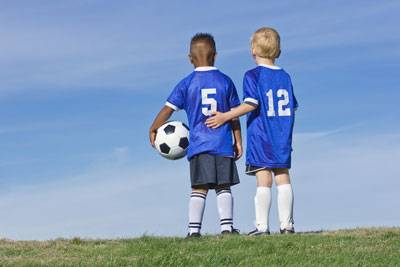 There are a variety of benefits to enrolling your children in youth sports programs. There’s the physical fitness aspect, as kids get the exercise they need to stay fit and active. It’s a grade booster, as studies show that those who participate in youth sports are more likely to do better in the classroom. Above all, however, sports are fun. It can be very rewarding to watch your children dedicate themselves to a sport while having a great time in the process.
There are a variety of benefits to enrolling your children in youth sports programs. There’s the physical fitness aspect, as kids get the exercise they need to stay fit and active. It’s a grade booster, as studies show that those who participate in youth sports are more likely to do better in the classroom. Above all, however, sports are fun. It can be very rewarding to watch your children dedicate themselves to a sport while having a great time in the process.
While there are a bevy of benefits to youth sports, there’s one big benefit that may not necessarily be top of mind: career building. Youth sports help provide career-building skills that will benefit children years down the line when they’re in the workforce. Here’s a look at some of the ways youth sports provides career-building skills:
Preparation: They say practice makes perfect. Thus, not only is it important to hone your skills at a particular craft by putting in the practice hours, but it’s also important to prepare for the game or task at hand from a strategic standpoint. This is also true in life. In the classroom, you’ll have to prepare for tests. In the workforce, you’ll have to prepare for interviews. After you’ve gotten the job, you’ll likely have to plan presentations for clients or bosses. Planning and preparation is an important part of a career, and it can all begin with the important details one learns before the big youth championship game.
Getting along with others: As your child plays sports, it’s highly unlikely that he/she will be friends with every single teammate. The same can be said about the working world. You’re not going to get along with everyone you work with and everyone you do business with. However, just as it’s important on a team, in your career, you have to put differences aside and come together for the greater good. On a youth sports team, this greater good is doing what it takes to win the game. In the career world, this greater good is doing what it takes to accomplish sales goals or attract new business.
...



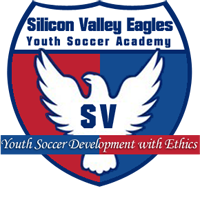
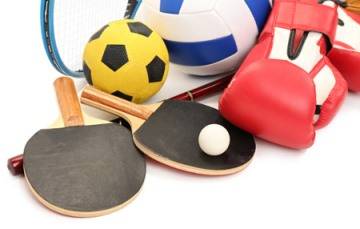 There are a bevy of benefits for kids who play multiple sports. These include becoming better overall athletes from engaging in multiple disciplines; learning to be smarter and more creative players; and staying more active and having more fun in athletics. In addition, research shows that the majority of athletes who go on to play college sports come from multi-sport backgrounds.
There are a bevy of benefits for kids who play multiple sports. These include becoming better overall athletes from engaging in multiple disciplines; learning to be smarter and more creative players; and staying more active and having more fun in athletics. In addition, research shows that the majority of athletes who go on to play college sports come from multi-sport backgrounds. As a former coach with well over 30 years of experience helping young people learn to play soccer and learn life lessons on the field, I’ve seen some changes over the years. Equipment has gotten more expensive and fields have gotten nicer, but there are changes in the parents and the way things are run as well. Here’s my take on what I saw 30 years ago and what I’m seeing today.
As a former coach with well over 30 years of experience helping young people learn to play soccer and learn life lessons on the field, I’ve seen some changes over the years. Equipment has gotten more expensive and fields have gotten nicer, but there are changes in the parents and the way things are run as well. Here’s my take on what I saw 30 years ago and what I’m seeing today. There’s no question about it: kids (and kids at heart) love participating in team sports. In 2011, 21.5 million children between the ages of 6 and 17 played a team sport. And, as ESPN says, “Youth sports is so big that no one knows quite how big it is.”
There’s no question about it: kids (and kids at heart) love participating in team sports. In 2011, 21.5 million children between the ages of 6 and 17 played a team sport. And, as ESPN says, “Youth sports is so big that no one knows quite how big it is.”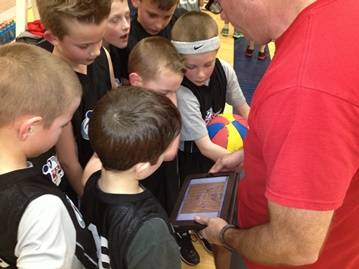 There is a problem with participation in kid sport.
There is a problem with participation in kid sport. Sports are competitive, and young players sometimes have a hard time dealing with the pressures of the game. Add in the demands of school, and you may end up with one stressed kid. Here are 10 tips for helping your child manage sports-induced stress.
Sports are competitive, and young players sometimes have a hard time dealing with the pressures of the game. Add in the demands of school, and you may end up with one stressed kid. Here are 10 tips for helping your child manage sports-induced stress. Even over the holidays, when your kids are training for sports, you want to provide them with the right foods to fuel their activities. You should also provide your child with the right foods to promote their growth. Certain nutrients are essential to achieve optimal growth; this helps their performance in sports and can help to promote their overall health. Here we consider which macro and micronutrients are vital for growing bodies and where these can be sourced in the diet.
Even over the holidays, when your kids are training for sports, you want to provide them with the right foods to fuel their activities. You should also provide your child with the right foods to promote their growth. Certain nutrients are essential to achieve optimal growth; this helps their performance in sports and can help to promote their overall health. Here we consider which macro and micronutrients are vital for growing bodies and where these can be sourced in the diet. Did you know that young athletes are at a higher risk for heat-related illnesses than adults? This is because kids don’t sweat as much as and absorb heat faster than adults. Plus, kids tend not to want to drink water or other fluids while they’re exercising. Even though most pediatricians recommend that kids should drink half of their total body weight in ounces of water each day, we all know that, in reality, that is the exception rather than the rule.
Did you know that young athletes are at a higher risk for heat-related illnesses than adults? This is because kids don’t sweat as much as and absorb heat faster than adults. Plus, kids tend not to want to drink water or other fluids while they’re exercising. Even though most pediatricians recommend that kids should drink half of their total body weight in ounces of water each day, we all know that, in reality, that is the exception rather than the rule.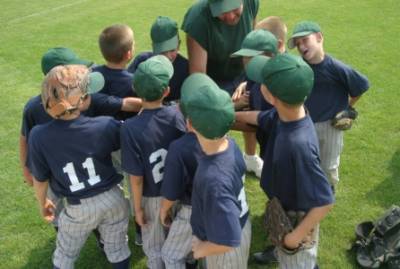 Last week, I was invited to participate in the NFL Health + Safety Conference in New York City along with more than 40 other bloggers and writers. Sitting at a huge conference table at NFL headquarters, we heard from representatives of the NFL and USA Football about the success to-date of the Heads-Up Football program in reducing head injuries in youth football, as well as plans to expand the program in the coming year.
Last week, I was invited to participate in the NFL Health + Safety Conference in New York City along with more than 40 other bloggers and writers. Sitting at a huge conference table at NFL headquarters, we heard from representatives of the NFL and USA Football about the success to-date of the Heads-Up Football program in reducing head injuries in youth football, as well as plans to expand the program in the coming year.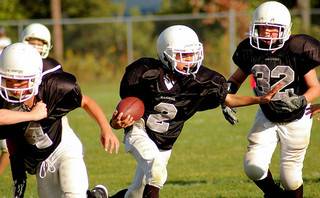 Over the past few weeks, my Facebook news feed has lit up with news of friends’ children suffering concussions due to football, including these highlights:
Over the past few weeks, my Facebook news feed has lit up with news of friends’ children suffering concussions due to football, including these highlights: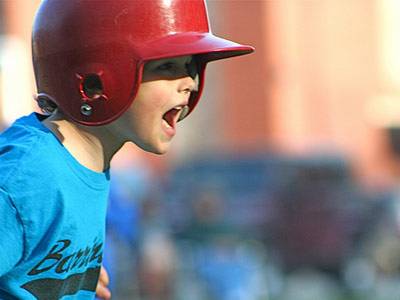 Flying home from Spring Training a few weeks ago, our flight was packed with 7- and 8- year-old boys. Had they gone to see their beloved San Francisco Giants or Oakland A’s play up-close and get autographs? No. They were returning from a four-day baseball tournament where they played against other 7- and 8-year-olds from up and down the West Coast and neighboring states.
Flying home from Spring Training a few weeks ago, our flight was packed with 7- and 8- year-old boys. Had they gone to see their beloved San Francisco Giants or Oakland A’s play up-close and get autographs? No. They were returning from a four-day baseball tournament where they played against other 7- and 8-year-olds from up and down the West Coast and neighboring states. Webster defines simulation as “the act or process of pretending; feigning.”
Webster defines simulation as “the act or process of pretending; feigning.” Along with helping children learn how to read, how to talk and how to play well with others, parents are responsible for teaching their kids how to move.
Along with helping children learn how to read, how to talk and how to play well with others, parents are responsible for teaching their kids how to move.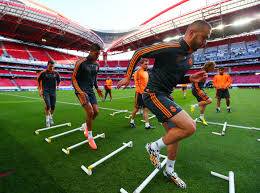 Fall is here, which means school and extracurricular activities are here, too. One of the many sports popular during the fall is soccer. As with any sport, you can’t just show up for tryouts and expect to make the team, you’ve got to invest the time and effort necessary to show coaches that you have what it takes.
Fall is here, which means school and extracurricular activities are here, too. One of the many sports popular during the fall is soccer. As with any sport, you can’t just show up for tryouts and expect to make the team, you’ve got to invest the time and effort necessary to show coaches that you have what it takes.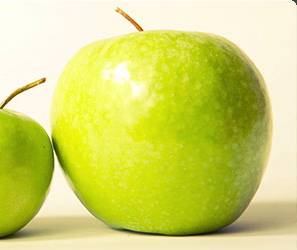 Practices are a good way to test what snacks work best for your child in regards to energy and performance. Just as the old adage goes for adult athletes, “Do not try anything new on race day;” this also can be applied to youth soccer players. Testing what food works well for pre/post practice can then be applied to pre/post games.
Practices are a good way to test what snacks work best for your child in regards to energy and performance. Just as the old adage goes for adult athletes, “Do not try anything new on race day;” this also can be applied to youth soccer players. Testing what food works well for pre/post practice can then be applied to pre/post games.

